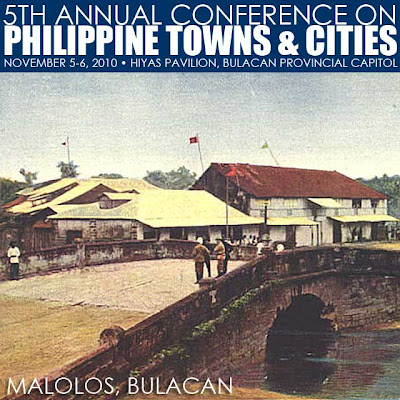
At the heart of downtown San Fernando, Pampanga is the historic poblacion, replete with remnants of the city's rich architectural heritage and history. These architectural legacies, together with the intangible culture of the city, are the focus of the urban renewal program of the City of San Fernando called Preserving Heritage for Progress. In fact, the program was recognized as one of the Top 10 Best Practices of the League of Cities of the Philippines, and a Trailblazing Program of the Galing Pook Awards both in 2004.
In 2006, the Association of Tourism Officers of the Philippines (ATOP) selected the program as the winner of the Heritage Tourism Award of the Best Tourism Practices – Special Award Category "in cognizance of the innovative and valuable effort, passion and commitment of the City Government to ensure the protection and promotion of the City's priceless architectural heritage by restoring and preserving the same for the benefit of the future generation of Fernandinos and the Filipino people."
In line with a popular salawikain "Ang hindi lumingon sa pinanggalingan ay hindi makakarating sa paroroonan," San Fernando firmly believes that its history, heritage and culture are vital tools in the advance towards further progress.


In 2004, the historic core of the city was declared the City of San Fernando Heritage District through a city ordinance. Several of the structures have been declared by the National Historical Institute as part of our national heritage. While all heritage structures are protected by the ordinance.

Most of the structures are concentrated along Consunji Street, Tiomico Street and Capitol Boulevard. These include the Metropolitan Cathedral of San Fernando, San Fernando Train Station and Death March Marker, Pampanga Capitol and Provincial Jail, and the Lazatin, Hizon-Singian, Consunji, Ocampo, Henson-Hizon, and Hizon Houses among many others. Four houses are already declared by the National Historical Institute as Heritage Houses.

Then there's the PASUDECO Sugar Central along Capitol Boulevard. It stands as a testament to the resiliency of the Kapampangans as a people and their continuous drive towards progress and development. An inherent part of the heritage district of the City of San Fernando, this storied structure, a fine example of industrial heritage, is ripe for adaptive reuse and conservation. This proposition yearns for an architect or urban planner with the vision, imagination and genius to incorporate this historical structure into the 21st century community that will be built around it.
Unknown to many, the town proper of San Fernando may be the only city in the country where motorized tricycles are prohibited thanks to the political will of its leaders throughout the years. You can in fact, still enjoy a kalesa ride around the old quarter. Why not take a journey back to San Fernando's storied past with a visit to the city's heritage district?

The city is very historical in fact, it has a large assemblage of markers from the National Historical Institute. I've counted eighteen markers so far. Later this year, markers for the Pampanga High School and Hizon House will be installed bringing the count to twenty.
Just a few days ago, I got a text message from Dom Martin Gomez inviting me to lunch since they plan to reconstruct and restore another Hizon House which will add luster to the heritage district.
There is no doubt, the citizens of San Fernando indeed value the city's architectural heritage. Which is why news of an SM City San Fernando to be built right smack in the center of the heritage district will be met with stiff opposition. I was told the mall is going to be built along Consunji Street, between PNB and Pampanga Hotel, all the way to V. Tiomico Street.
I was all praises for SM when they built SM City Pampanga away from the poblacion. I can't understand why they have to build another one in our historic downtown area. Right now, I'm already thinking about the damage the proposed five or six-floor mall building will do to the cultural landscape of San Fernando. It will tower over the Cathedral! The height alone will destroy the character of the district. The idiots!
For the love of Philippine heritage, will SM please find another place for their mall (as if they don't have enough already). Stay away from our heritage district please!
Save the City of San Fernando Heritage District! No to SM City San Fernando in our heritage district!











